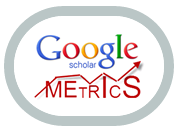TEAMS PLATFORM: interaction and teaching
DOI:
https://doi.org/10.47456/pl.v11i29.36614Abstract
Faced with social isolation, many schools have offered remote learning to students, to keep classes going even at a distance. Thus, many students and teachers began to use digital platforms as classroom space. In this context, the teaching of reading and writing assumes a relevant role, since the texts produced and shared by teachers and students come from multimedia resources, available in the digital context. From this scenario, we aim, in this article, to propose a discussion about how these texts set on digital platforms - hypertexts - are constituted in terms of characteristics, contextual, multimodal, compositional, and interactional aspects, and what are the types of interaction that these texts produce in a teaching environment. With theoretical basis in Textual Linguistics of sociocognitive and interactional perspective, the work was developed through bibliographic research and content analysis, being selected as corpus hypertexts set in Teams platform, in which students and teachers create content and share resources in an integrated way. The results found point out that the use of the Teams platform as a classroom can expand the theoretical and methodological perspectives for teaching reading and writing in a digital environment, as well as new forms of interaction, making the student autonomous, more critical, being able to alternate roles of reader and producer of multimodal texts, in a more playful way.
Keywords: Hypertext. Interaction. Teaching.
Downloads
Downloads
Published
How to Cite
Issue
Section
License
Copyright (c) 2021 PERcursos Linguísticos

This work is licensed under a Creative Commons Attribution-NonCommercial-NoDerivatives 4.0 International License.
O autor de submissão à Revista PERcursos Linguísticos cede os direitos autorais à editora da revista (Programa de Pós-Graduação em Linguística - UFES), caso a submissão seja aceita para publicação. A responsabilidade do conteúdo dos artigos é exclusiva dos autores. É proibida a submissão integral ou parcial do texto já publicado na revista a qualquer outro periódico.
Os trabalhos aqui apresentados utilizam a licença Creative Commons CC BY: Attribution- NonCommercial- NoDerivatives 4.0 International. Para mais informações, verificar: https://creativecommons.org/licenses/by-nc-nd/4.0/
Os trabalhos na revista são arquivados pelo sistema Rede de Preservação PKP (PKP PN) e LOCKSS





